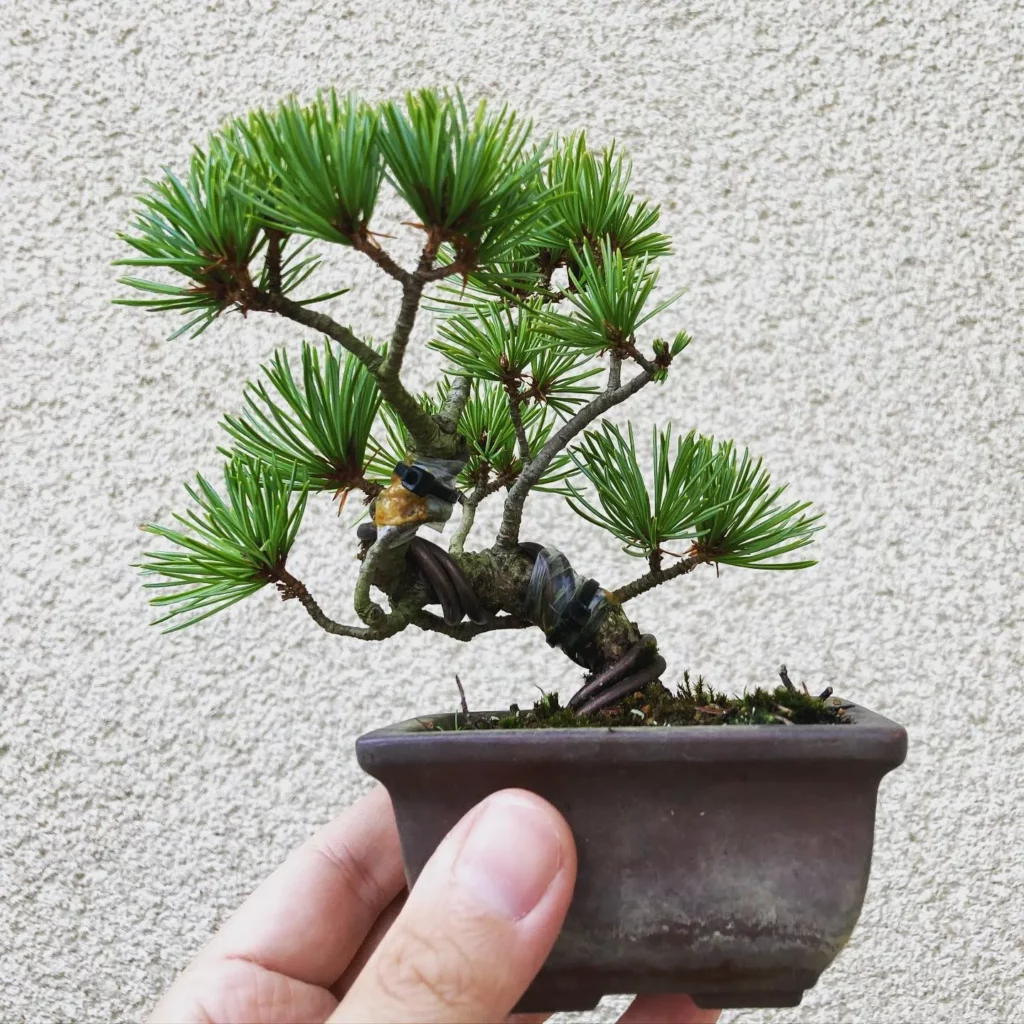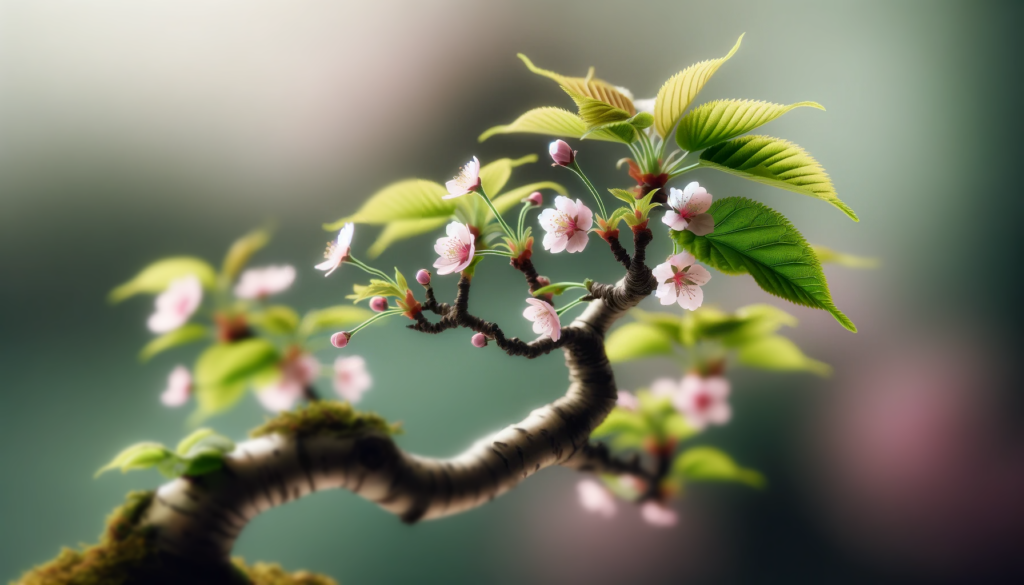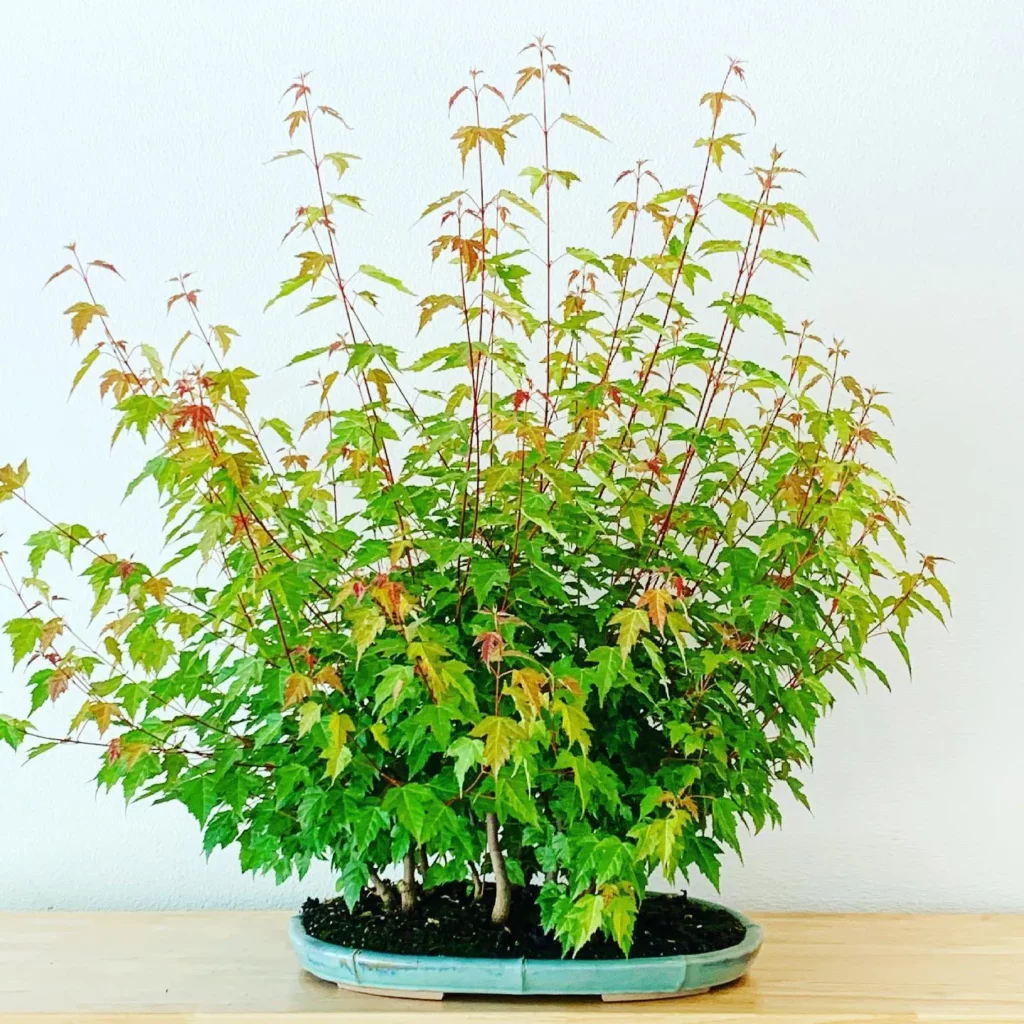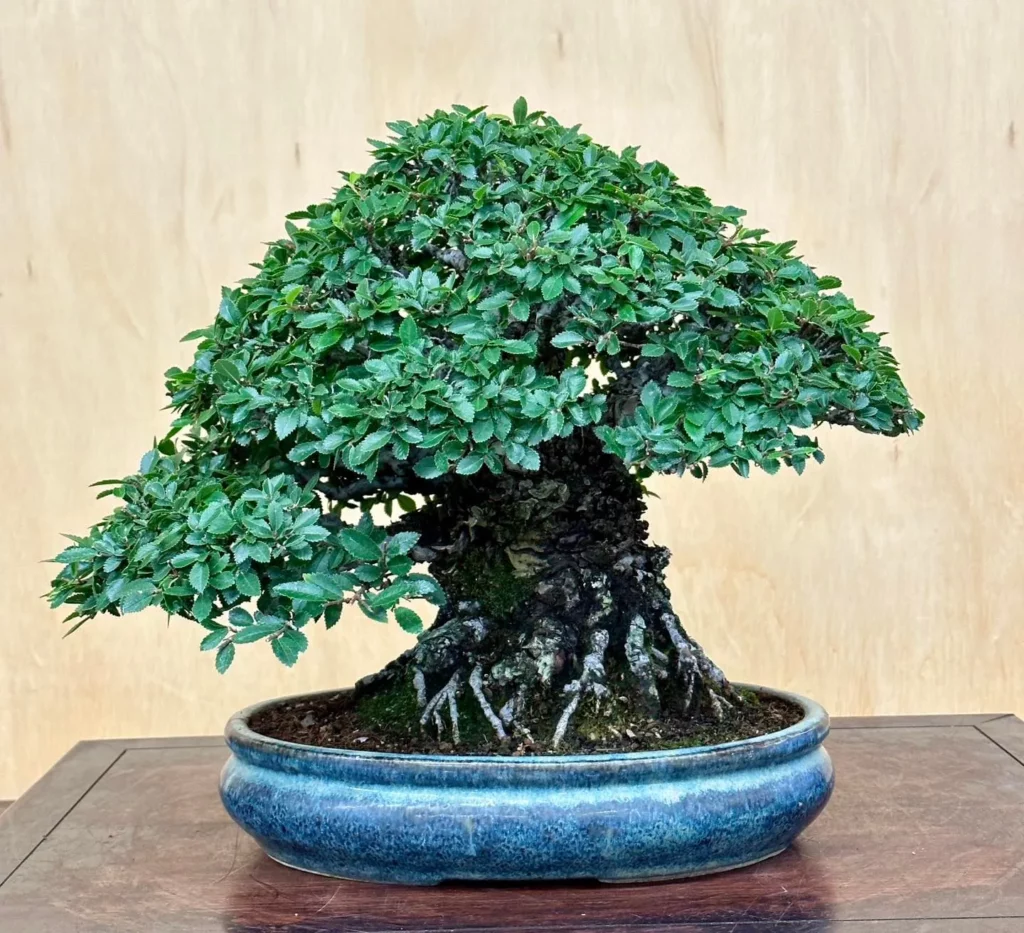Bonsai trees can be grown both indoors and outdoors, but there are important distinctions between the two. Understanding these differences will help you choose the right type of bonsai tree for your gardening style and ensure proper care.
When it comes to indoor bonsai trees, they require specific conditions to thrive. Providing ample light and maintaining high humidity levels are crucial for their growth. Placing your indoor bonsai tree near a south-facing window is ideal, as it allows for maximum sunlight exposure. Popular indoor bonsai tree species include ficus, carmona, and Chinese elm.
On the other hand, outdoor bonsai trees need to be placed outside year-round and follow the natural annual cycle. These trees require a bright spot with plenty of light, although some afternoon shade can be beneficial during hot summers. It’s important to consider your local climate and the specific conditions of your garden or balcony when selecting an outdoor bonsai tree. Common outdoor bonsai tree species include juniper, pine, and maple.
When choosing a bonsai tree, prioritize its health and beauty over its age. The overall condition of the tree is more important than its age, as a healthy tree will thrive and develop beautifully with proper care.
Caring for bonsai trees requires some specialized tools, but it doesn’t have to be overly expensive. The Bonsai Outlet offers beginner-friendly bonsai trees and provides care instructions to ensure your success. Following specific guidelines for light, humidity, watering, fertilizing, and temperature will help you provide the best care for your bonsai trees, whether they are grown indoors or outdoors.
Key Takeaways:
- Indoor bonsai trees require specific conditions such as ample light and high humidity levels.
- Popular indoor bonsai tree species include ficus, carmona, and Chinese elm.
- Outdoor bonsai trees need to be placed outside year-round and require a bright spot with lots of light.
- Common outdoor bonsai tree species include juniper, pine, and maple.
- Prioritize the health and beauty of the tree over its age when selecting a bonsai tree.
Understanding Indoor Bonsai Trees
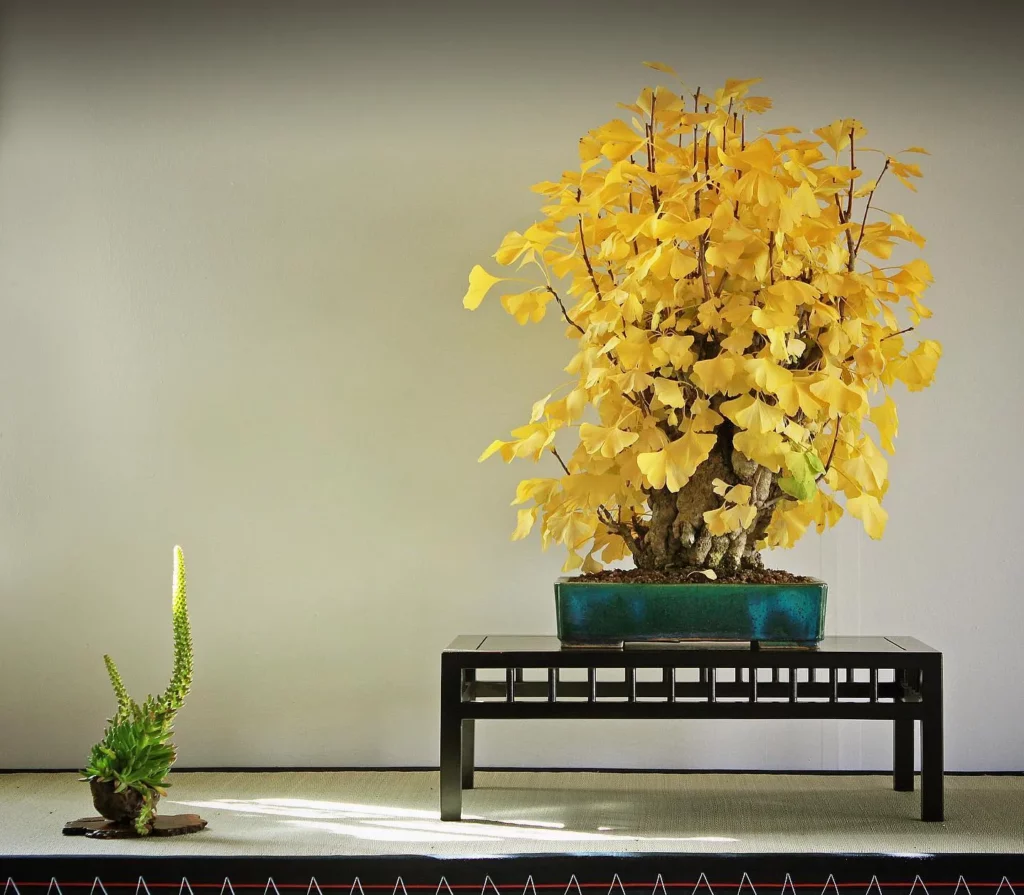


Indoor bonsai trees have become popular choices for those who want to bring a touch of nature into their homes. These miniature trees, artfully pruned and shaped, add a sense of tranquility and beauty to any living space. However, it’s important to understand that indoor bonsai trees require specific conditions to thrive.
Lighting: One of the key considerations for indoor bonsai trees is providing adequate lighting. Ideally, these trees should be placed near a south-facing window where they can receive plenty of bright, indirect sunlight. Placing them even just a few feet away from the window can significantly reduce light intensity, slowing down growth. Using a grow light can supplement natural light, especially during the darker winter months.
Humidity: Indoor bonsai trees also thrive in relatively high humidity. This can be achieved by placing the tree on a humidity tray filled with water or misting the leaves regularly. Another option is using a humidity dome or humidifier to create a microclimate around the tree. Maintaining proper humidity levels is crucial for preventing the tree from drying out and ensuring its overall health.
“Indoor bonsai trees require specific conditions to thrive. From the right lighting to humidity levels, learn how to create an optimal environment for your indoor bonsai tree.”
Popular Indoor Bonsai Tree Species
When choosing an indoor bonsai tree, it’s important to select a species that is well-suited to indoor conditions. Some popular choices include:
| Bonsai Tree Species | Characteristics | Care Tips |
|---|---|---|
| Ficus | Small, glossy leaves. Tolerates low light. | Requires regular watering and occasional pruning to maintain shape. |
| Carmona | Beautiful, fragrant flowers. Tolerates humidity. | Needs bright, indirect light and regular misting to maintain humidity. |
| Chinese Elm | Attractive, gnarled bark. Drought-tolerant. | Requires bright light and moderate watering. Prune in late winter or early spring. |
Popular Indoor Bonsai Tree Species

There are several beautiful species of bonsai trees that are well-suited for indoor environments. These trees can bring a touch of nature and tranquility to your home or office. Here are some popular indoor bonsai tree species:
- Ficus: Also known as the weeping fig, the ficus is one of the most common indoor bonsai tree species. It has attractive shiny leaves and can tolerate a variety of indoor conditions.
- Carmona: The carmona, or Fukien tea tree, is a tropical plant with small dark-green leaves and white flowers. It is known for its ability to produce small red berries, adding a pop of color to your indoor space.
- Chinese Elm: The Chinese elm is a popular choice for bonsai enthusiasts due to its small leaves and graceful, arching branches. It is a hardy tree that can adapt to different lighting conditions.
These indoor bonsai trees require specific care to thrive. It’s important to place them in a location with plenty of light, ideally near a south-facing window. This will provide them with the necessary sunlight for optimal growth. However, be cautious of placing them too close to the window, as the intensity of the sunlight can be too strong. If the light is too far away, it can greatly reduce the light intensity and slow down the tree’s growth.
Along with proper lighting, indoor bonsai trees also require relatively high humidity. You can increase humidity levels by placing a tray with water near the tree or using a humidifier. This will help prevent the leaves from drying out and maintain a healthy environment for your bonsai tree.
“Indoor bonsai trees require plenty of light and relatively high humidity, making a south-facing window the ideal location.”
The Importance of Light and Humidity for Indoor Bonsai Trees



Adequate light and humidity are essential for the health and growth of indoor bonsai trees. These factors play a crucial role in ensuring that your bonsai tree thrives and maintains its beauty. Without proper light, indoor bonsai trees can become weak and leggy, with pale leaves and stunted growth. Insufficient humidity, on the other hand, can cause dryness and wilting, leading to the decline of your bonsai tree.
To provide your indoor bonsai tree with the right amount of light, it is recommended to place it near a south-facing window. This will allow the tree to receive ample sunlight throughout the day. However, it’s important to note that even a few feet away from the window can significantly reduce light intensity. Therefore, placing your bonsai tree close to the window will ensure it receives the necessary light for optimal growth.
No products found.
Humidity is another crucial factor to consider when it comes to indoor bonsai tree care. Indoor environments are often drier than outdoor spaces, especially during winter months when heating systems are in use. To increase humidity levels, you can place a tray filled with water near your bonsai tree or use a humidifier. Misting the tree’s foliage with water can also help maintain optimal humidity levels.
Key Considerations for Outdoor Bonsai Trees
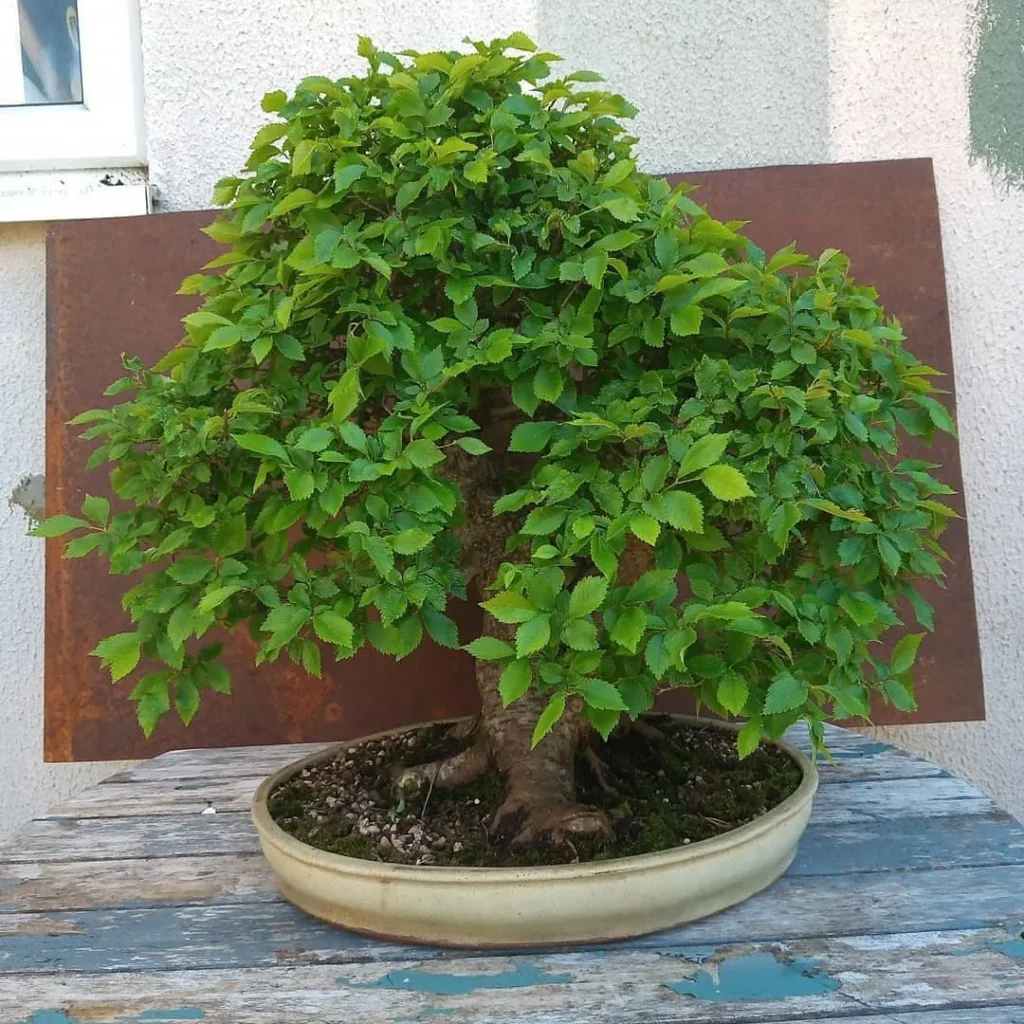
Outdoor bonsai trees offer a unique connection to nature and require specific considerations for their optimal growth. When selecting an outdoor bonsai tree, it’s important to take into account the specific conditions of your garden or balcony, as well as your local climate. Different species of bonsai trees have varying requirements, and understanding these factors will help ensure the health and longevity of your outdoor bonsai trees.
Light: Outdoor bonsai trees thrive in bright spots with plenty of natural light. It is essential to choose a location that receives ample sunlight throughout the day. While the morning sun is ideal for most species, some trees benefit from afternoon shade, especially in hot summers. By providing the right amount of sunlight, you will promote healthy growth and vibrant foliage in your outdoor bonsai trees.
No products found.
Winter Protection: During winter, outdoor bonsai trees may require protection from extreme temperatures, frost, and strong winds. Consider moving your bonsai tree to a sheltered area, such as a greenhouse or a cold frame, to shield it from harsh winter conditions. Alternatively, you can wrap the tree in protective insulation or use a bonsai frost cover to safeguard it from temperature fluctuations.
Tree Selection: When choosing an outdoor bonsai tree, prioritize the health and beauty of the tree over its age. A younger tree with a strong root system and vigorous growth is often a better choice than an older, weaker tree. Consider the specific requirements of different species, such as juniper, pine, and maple, and ensure they align with the conditions of your outdoor environment. By selecting the right tree species, you will set yourself up for success in your bonsai gardening journey.
| Key Considerations for Outdoor Bonsai Trees | Summary |
|---|---|
| Light | Choose a bright spot with ample sunlight, consider afternoon shade for some species. |
| Winter Protection | Protect bonsai trees from extreme temperatures, frost, and strong winds during winter. |
| Tree Selection | Prioritize the health and beauty of the tree over its age, consider species’ requirements. |
Recommended Outdoor Bonsai Tree Species



When it comes to outdoor bonsai trees, there are numerous species to choose from that are well-suited for different climates. Whether you live in a hot and sunny region or a cooler and more temperate area, there is a bonsai tree that can thrive in your outdoor space.
One popular choice for outdoor bonsai is the juniper. Junipers are hardy trees that can withstand harsh weather conditions, making them ideal for outdoor cultivation. They have beautiful foliage and can be trained into various bonsai styles, such as the formal upright or cascade.
Another great option is the pine tree. Pines are known for their resilience and ability to adapt to different climates. They feature long, slender needles and can develop stunning bark textures over time. Pine bonsai trees are often styled in the informal upright or slanting style.
A third recommended species is the maple tree. Maples are renowned for their vibrant autumn foliage, making them a stunning addition to any outdoor bonsai collection. They require a colder climate and go through a yearly dormancy period, during which their leaves change color. Maples can be styled in a variety of ways, including the broom or group planting style.
No products found.
When selecting an outdoor bonsai tree, it’s important to consider the specific conditions of your garden or balcony, as well as your local climate. Some trees may require more sunlight, while others may prefer partial shade. By understanding the needs of each species, you can create the ideal environment for your outdoor bonsai trees to thrive.
Outdoor Bonsai Species At a Glance:
| Bonsai Species | Preferred Climate | Bonsai Style |
|---|---|---|
| Juniper | Hot and sunny regions | Formal upright, cascade |
| Pine | Cooler and more temperate areas | Informal upright, slanting |
| Maple | Colder climate | Broom, group planting |
Creating the Ideal Outdoor Environment for Bonsai Trees

Providing the ideal growing conditions for outdoor bonsai trees is essential for their overall health and well-being. The outdoor environment plays a crucial role in the growth and development of these miniature trees, ensuring that they thrive and maintain their natural beauty. Here are some key factors to consider when creating the perfect outdoor environment for your bonsai trees:
- Light: Outdoor bonsai trees require ample sunlight to thrive. Find a bright spot in your garden or balcony that receives at least six hours of direct sunlight each day. However, it’s important to provide some afternoon shade during hot summers to prevent sunburn.
- Protection: In winter, outdoor bonsai trees may require protection from harsh temperatures, strong winds, and heavy snowfall. Consider using a cold frame, greenhouse, or bringing the bonsai indoors during extreme weather conditions.
- Watering: Outdoor bonsai trees have different watering needs compared to indoor ones. The frequency of watering will depend on factors such as climate, weather conditions, and the specific tree species. Monitor the soil moisture regularly and adjust your watering schedule accordingly.
- Fertilizing: Outdoor bonsai trees benefit from regular fertilization during the growing season. Use a balanced, slow-release bonsai fertilizer or organic options like liquid seaweed or fish emulsion to provide the essential nutrients your trees need to thrive.
- Soil and Drainage: Ensure that your outdoor bonsai tree is planted in well-draining soil to prevent waterlogging and root rot. Use a bonsai-specific soil mix or make your own by combining components such as akadama, pumice, and lava rock.
No products found.
Tips for Outdoor Bonsai Tree Care
Here are some additional tips to help you successfully care for your outdoor bonsai trees:
- Protect your bonsai trees from pests and diseases by regularly inspecting the foliage and using appropriate insecticides or fungicides when necessary.
- Prune your outdoor bonsai trees regularly to maintain their desired shape and promote healthy growth. Use sharp and clean bonsai shears for precise cuts.
- Wiring can be used to shape and style your bonsai trees. However, be cautious not to wire too tightly, as it can damage the branches. Remove the wire after a few months to prevent it from cutting into the bark.
| Light | Protection | Watering | Soil and Drainage | Fertilizing |
|---|---|---|---|---|
| Outdoor bonsai trees require ample sunlight | In winter, outdoor bonsai trees may require protection | Outdoor bonsai trees have different watering needs | Ensure well-draining soil | Regularly fertilize during the growing season |
Prioritizing Bonsai Tree Health and Beauty



Choosing a bonsai tree based on its health and aesthetic appeal should be the primary consideration for any bonsai enthusiast. When selecting a bonsai tree, it’s essential to focus on the overall condition of the tree rather than its age. A healthy bonsai tree will have vibrant foliage, well-proportioned branches, and a robust root system.
Before purchasing a bonsai tree, carefully inspect it for any signs of disease or pest infestation. Look for discolored or wilting leaves, evidence of insects or fungal growth, or any other abnormalities. Choosing a healthy tree will give you a better chance of success in bonsai gardening and ensure that your tree thrives for years to come.
Aesthetics also play a significant role in bonsai tree selection. Consider the style and shape you prefer, whether it’s formal upright, informal upright, slanting, cascade, or another style. Look for a tree with a well-defined trunk, pleasing branch structure, and balanced overall composition. The beauty of a bonsai tree lies in its ability to evoke a sense of harmony and natural elegance.
| Type | Characteristics |
|---|---|
| Formal Upright | Straight, upright trunk with gradually tapering branches |
| Informal Upright | Curved trunk and irregularly spaced branches |
| Slanting | Slanted trunk with branches growing at an angle |
“A bonsai tree is not just a plant; it is a reflection of the grower’s passion and dedication.” – Unknown
Tools and Resources for Bonsai Care
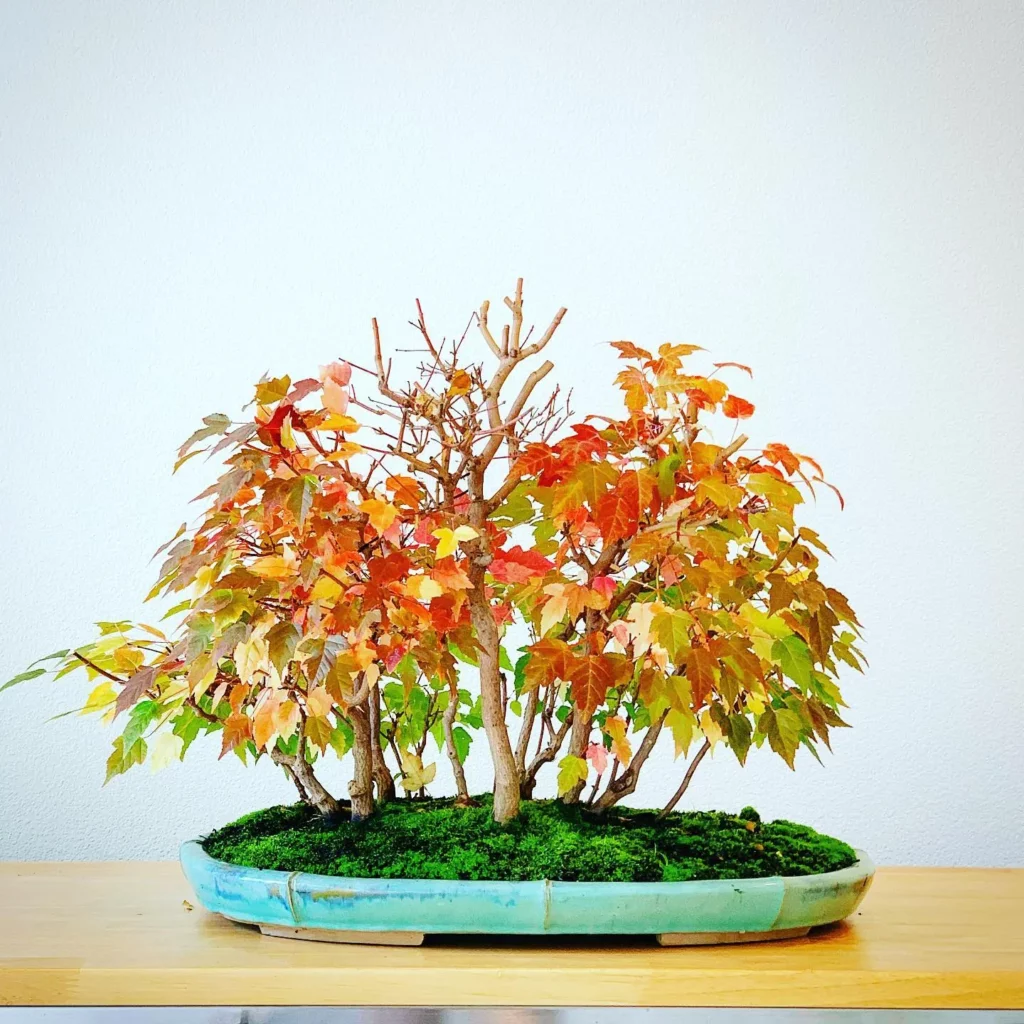
Proper care of bonsai trees requires the right tools and resources to ensure their health and aesthetic appeal. Whether you are growing indoor or outdoor bonsai trees, having the necessary equipment can make a significant difference in the success of your bonsai gardening journey.
When it comes to pruning and shaping your bonsai trees, a set of high-quality bonsai shears is essential. These specialized scissors allow for precise trimming and help maintain the desired shape of your tree. Additionally, bonsai wire is used to shape branches and create the distinctive bonsai form. The wire is carefully wrapped around the branches, allowing you to guide their growth.
A bonsai soil mix is crucial for providing the right conditions for your tree’s roots. This mix helps retain moisture while still allowing for proper drainage. Additionally, a bonsai fertilizer is necessary to provide the essential nutrients that bonsai trees require. It’s important to choose a slow-release fertilizer specifically formulated for bonsai trees to avoid overfeeding your plants.
No products found.
To measure the moisture levels in your bonsai soil, a moisture meter can be a valuable tool. This device allows you to determine when your tree needs watering, preventing both overwatering and underwatering. A humidity tray is also beneficial for indoor bonsai trees, as it helps maintain the necessary moisture levels around the tree.
| Tools | Resources |
|---|---|
| Bonsai shears | Bonsai Outlet |
| Bonsai wire | Bonsai Empire |
| Bonsai soil mix | Bonsai Tree |
| Bonsai fertilizer | Bonsai Nut |
| Moisture meter | Bonsai Tools |
| Humidity tray | Eastern Leaf |
Tips for Successful Bonsai Tree Care



Caring for bonsai trees involves following specific guidelines for their well-being, regardless of whether they are grown indoors or outdoors. To ensure the health and beauty of your bonsai trees, here are some essential tips to keep in mind:
1. Light: Provide adequate light for your bonsai trees. Indoor bonsai trees thrive in a south-facing window where they can receive plenty of sunlight. Outdoor bonsai trees should be placed in a bright spot with ample light, while ensuring they also have some shade during hot summers.
2. Humidity: Maintain proper humidity levels. Indoor bonsai trees benefit from a relatively high humidity environment. Placing a tray of water nearby or using a humidity tray can help increase humidity levels. Outdoor bonsai trees generally have sufficient humidity, but in dry regions, misting the foliage can be beneficial.
3. Watering: Water your bonsai trees carefully. Check the moisture level of the soil regularly and water only when the topsoil feels slightly dry. Avoid overwatering, as it can lead to root rot. Outdoor bonsai trees may require more water in summer and less in winter.
No products found.
4. Fertilizing: Provide appropriate fertilization. Use a balanced bonsai fertilizer during the growing season to promote healthy growth. Follow the instructions on the fertilizer package and avoid overfertilizing, as it can damage the tree.
5. Temperature: Maintain suitable temperatures for your bonsai trees. Indoor bonsai trees prefer temperatures between 60-80°F (15-27°C). Outdoor bonsai trees have specific temperature requirements depending on their species, so it’s essential to choose a tree that is suitable for your local climate.
FAQ
Q: What is the difference between indoor and outdoor bonsai tree cultivation?
A: Indoor bonsai trees require plenty of light and relatively high humidity, while outdoor bonsai trees need to be placed outside year-round.
Q: Where is the best location for indoor bonsai trees?
A: Indoor bonsai trees should be placed near a south-facing window to ensure they receive adequate light. Placing them a few feet away from the window can reduce light intensity.
Q: Which tree species are popular for indoor bonsai trees?
A: Popular indoor bonsai tree species include ficus, carmona, and Chinese elm.
Q: Where should outdoor bonsai trees be placed?
A: Outdoor bonsai trees should be placed in a bright spot with lots of light. In hot summers, afternoon shade can be beneficial. In winter, they may require protection.
Q: What are common outdoor bonsai tree species?
A: Common outdoor bonsai tree species include juniper, pine, and maple.
Q: What factors should be considered when selecting an outdoor bonsai tree?
A: When selecting an outdoor bonsai tree, consider the specific conditions of your garden or balcony, as well as your local climate.
Q: Should the age of the bonsai tree be prioritized?
A: The health and beauty of the bonsai tree should be prioritized over its age.
Q: Are bonsai gardening tools expensive?
A: Bonsai gardening does require special tools, but it doesn’t have to be overly expensive. The Bonsai Outlet offers beginner-friendly bonsai trees and provides care instructions.
Q: What are the guidelines for caring for bonsai trees?
A: Caring for bonsai trees involves following specific guidelines for light, humidity, watering, fertilizing, and temperature.
Q: Can bonsai trees be grown successfully indoors and outdoors?
A: With the right tree species selection and proper care, bonsai trees can be grown successfully in both indoor and outdoor settings.




